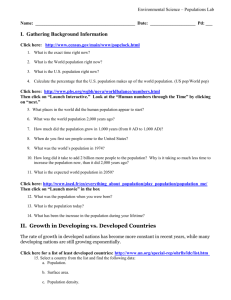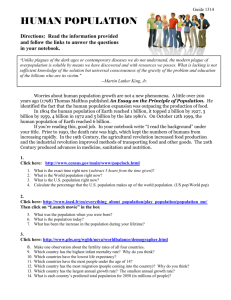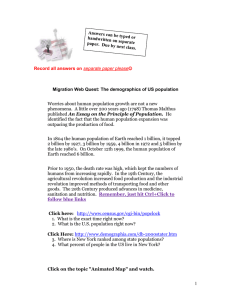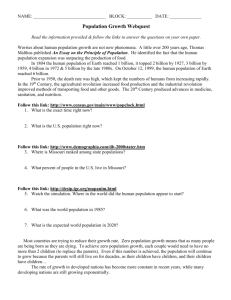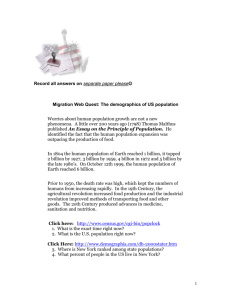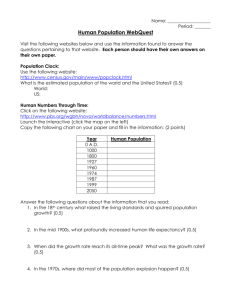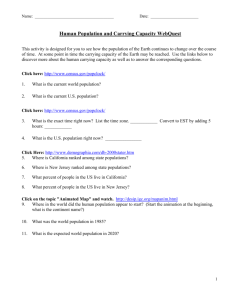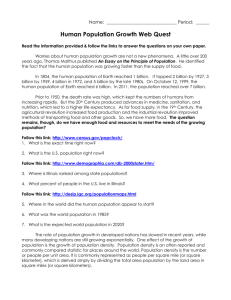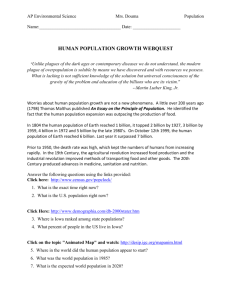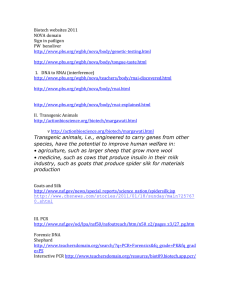human population
advertisement
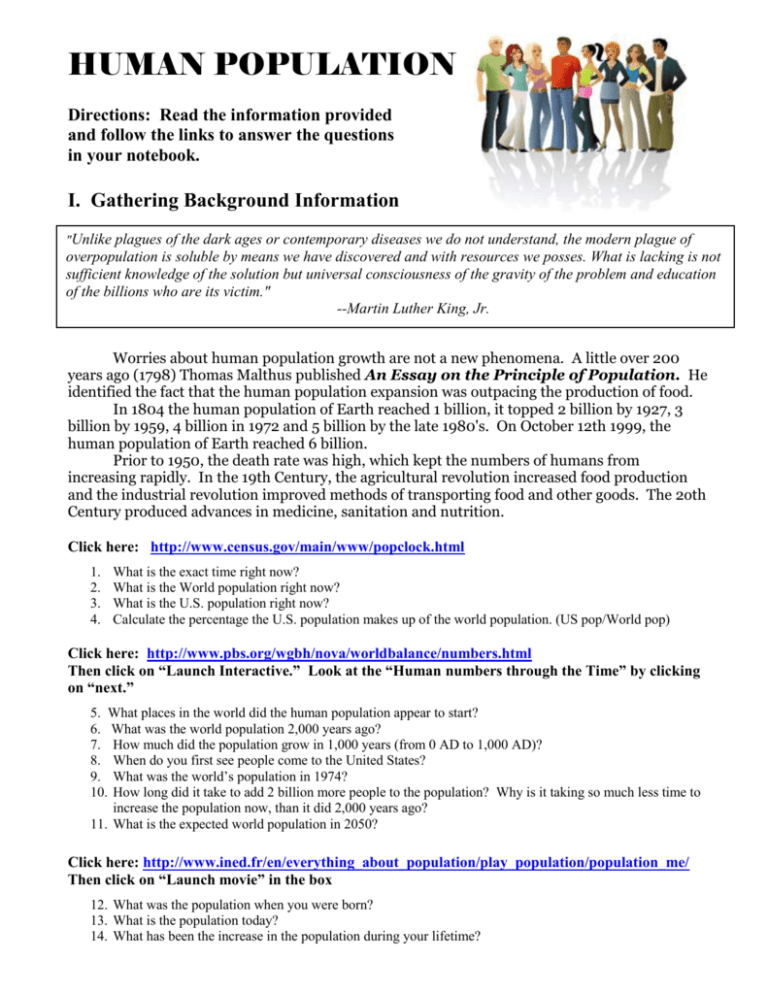
HUMAN POPULATION Directions: Read the information provided and follow the links to answer the questions in your notebook. I. Gathering Background Information "Unlike plagues of the dark ages or contemporary diseases we do not understand, the modern plague of overpopulation is soluble by means we have discovered and with resources we posses. What is lacking is not sufficient knowledge of the solution but universal consciousness of the gravity of the problem and education of the billions who are its victim." --Martin Luther King, Jr. Worries about human population growth are not a new phenomena. A little over 200 years ago (1798) Thomas Malthus published An Essay on the Principle of Population. He identified the fact that the human population expansion was outpacing the production of food. In 1804 the human population of Earth reached 1 billion, it topped 2 billion by 1927, 3 billion by 1959, 4 billion in 1972 and 5 billion by the late 1980's. On October 12th 1999, the human population of Earth reached 6 billion. Prior to 1950, the death rate was high, which kept the numbers of humans from increasing rapidly. In the 19th Century, the agricultural revolution increased food production and the industrial revolution improved methods of transporting food and other goods. The 2oth Century produced advances in medicine, sanitation and nutrition. Click here: http://www.census.gov/main/www/popclock.html 1. 2. 3. 4. What is the exact time right now? What is the World population right now? What is the U.S. population right now? Calculate the percentage the U.S. population makes up of the world population. (US pop/World pop) Click here: http://www.pbs.org/wgbh/nova/worldbalance/numbers.html Then click on “Launch Interactive.” Look at the “Human numbers through the Time” by clicking on “next.” 5. What places in the world did the human population appear to start? 6. What was the world population 2,000 years ago? 7. How much did the population grow in 1,000 years (from 0 AD to 1,000 AD)? 8. When do you first see people come to the United States? 9. What was the world’s population in 1974? 10. How long did it take to add 2 billion more people to the population? Why is it taking so much less time to increase the population now, than it did 2,000 years ago? 11. What is the expected world population in 2050? Click here: http://www.ined.fr/en/everything_about_population/play_population/population_me/ Then click on “Launch movie” in the box 12. What was the population when you were born? 13. What is the population today? 14. What has been the increase in the population during your lifetime? II. Growth in Developing vs. Developed Countries "Which is the greater danger - nuclear warfare or the population explosion? The latter absolutely! To bring about nuclear war, someone has to DO something; someone has to press a button. To bring about destruction by overcrowding, mass starvation, anarchy, the destruction of our most cherished values-there is no need to do anything. We need only do nothing except what comes naturally - and breed. And how easy it is to do nothing." --Dr. Isaac Asimov (in this 1966 interview he predicted that world population would reach 6 billion near the year 2000, but his prediction was conservative: we passed the 6 billion mark in October 1999.) The rate of growth in developed nations has become more constant in recent years, while many developing nations are still growing exponentially. Click here for a list of least developed countries: http://www.un.org/special-rep/ohrlls/ldc/list.htm 15. Select a country from the list and find the following data: a. Population. b. Surface area. c. Population density. Click here: http://cyberschoolbus.un.org/infonation/index.asp?id=840 16. Record the following data for the U.S (note that numbers are in thousands so you have to convert to millions). a. Population. b. Surface area. c. Population density. 17. Why do the developing countries have a higher population growth than already developed countries? Click here: http://www.pbs.org/wgbh/nova/worldbalance/demographer.html 18. Make one observation about the fertility rates of all four countries. 19. Which country has the highest infant mortality rate? Why do you think? 20. Which countries have the lowest life expectancy? 21. Which countries have the most people under the age of 14? 22. Which country has the most migration (people coming into the country)? Why do you think? 23. Which country has the largest annual growth rate? The smallest annual growth rate? 24. What is each country’s predicted total population for 2050 (in millions of people)? III. Conclusions Go back to the US population data: http://www.census.gov/cgi-bin/popclock 25. What is the exact time right now? 26. How many minutes have elapsed since you answered question # 2? 27. What is the US population right now? 28. What was the gain in US population while you have been working on this activity? 29. What has been the gain in population per minute over this activity? Show your work. 30. What was the population gain per second over this activity? 31. How does this compare with the stated gain per second on the census web site?
